Taramasalata is a traditional Greek appetizer of cod roe with lemon juice and vegetable oil. In Greece it is served with Kalamata olives and sliced pita.
What is Taramasalata?
Taramasalata is a fascinating dish that gives you a taste of the Mediterranean with every bite. It’s a traditional Greek dip made primarily from tarama, the salted and cured roe (fish eggs) of cod, carp, or grey mullet. This ingredient gives the dip its distinctive, slightly salty taste and often a pale pink color, although variations can range from creamy white to bright pink, depending on the type of roe and other ingredients used.
What’s particularly interesting about taramasalata is the balance of its flavours. It combines the rich and savory taste of the roe with the tanginess of lemon juice, and is often mellowed down by other ingredients such as olive oil, bread, and sometimes onions or garlic.
Taramasalata is typically served as a meze (appetizer) and is a staple in Greek cuisine. It’s usually spread on bread or crackers and often accompanied by other mezes. Its unique taste and smooth, creamy texture make it a must-try for anyone interested in exploring Greek food and culture.
Variations
There are many variations of taramasalata recipes; every corner of Greece cooks it in its own way. Somewhere they add more lemon juice, somewhere they add onions or garlic, somewhere they use olive oil, somewhere vegetable oil, and so on. These are all variations with which you can endlessly experiment and find your perfect recipe.
But all taramasalata recipes can be roughly divided by one feature. The ingredient used as a thickener and influences the texture and taste of the final dish. I propose to divide the recipes into three groups:
- without thickener;
- taramasalata with bread;
- taramasalata with boiled potatoes;
I will describe their features and differences in more detail in a separate post. And this time we will understand how to cook taramasalata with bread.
What Does Taramasalata Taste Like?
Taramasalata offers a unique flavor profile that is both rich and invigorating. It has a slightly salty, oceanic taste courtesy of the tarama (fish roe), which is the primary ingredient. This briny, maritime flavor is similar to caviar but more subtle, hinting at its origins in the sea without overwhelming the palate.
However, taramasalata is not a one-note dish. Its flavor is layered and complex, owing to the other ingredients that balance and complement the taste of the roe. The lemon juice adds a tangy, refreshing acidity that lightens the overall richness. Bread and olive oil lend a creamy, smooth texture to the dip, mellowing out its intense flavors and lending an almost buttery undertone.
While the taste of taramasalata can vary slightly depending on the specific recipe, its unique blend of flavors is invariably savory and slightly tangy, offering an echo of the Mediterranean with every bite. It’s a flavor that may be unfamiliar to some, but one that is often quickly appreciated due to its distinctive and satisfying taste.
Ingredients
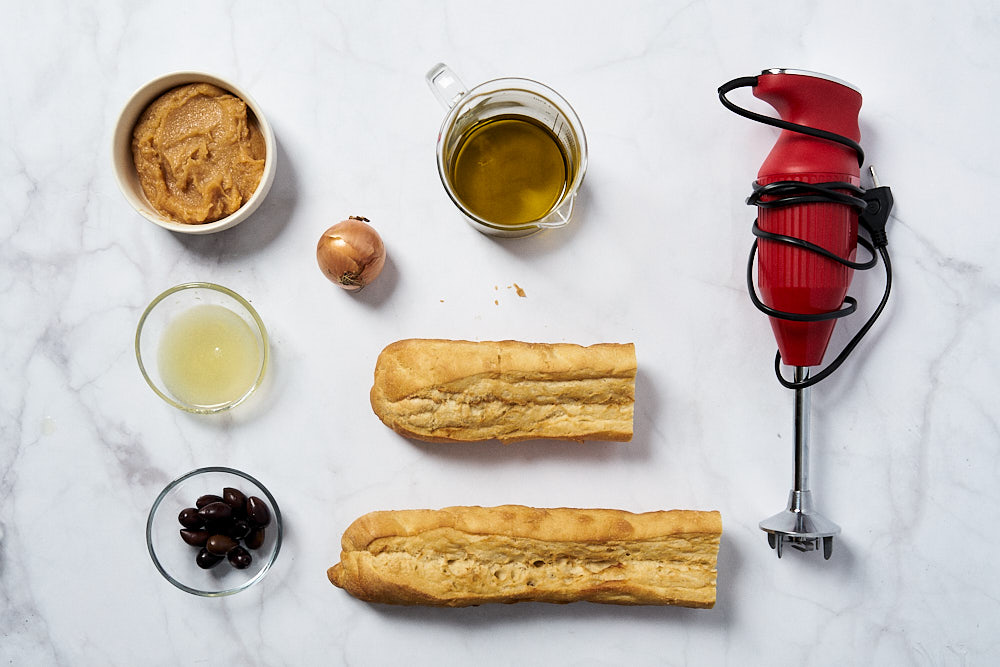
- 200 g (7,1 oz) of cod roe (traditionally smoked, but you can replace it with regular caviar)
- 300 g (10,6 oz) bread (stale, yesterday’s bread is fine)
- 1/2 onion
- 100-150 ml (6,8-10,2 tbsp) olive oil (use regular olive oil, not extra-virgin, you can substitute any other vegetable oil without taste/flavor, sunflower oil will work fine)
- 50 ml (3,4 tbsp) lemon juice (~juice of one large lemon)
- pita bread (optional, for serving)
- black kalamata olives (optional, for serving)
Required equipment
You will need a blender or food processor. It is most convenient to use a food processor or a stationary blender.
I used a Bamix M160 immersion blender (similar on amazon)
Step by step recipe
Peel and chop half an onion. It will be enough just to divide it in half, but to achieve a more uniform consistency I cut it more finely.

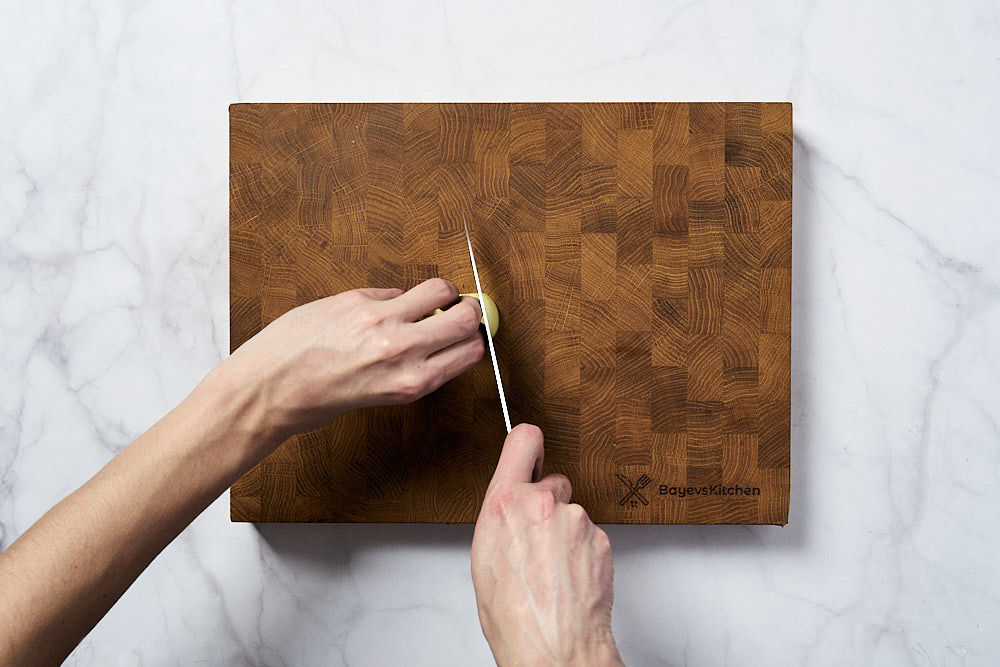
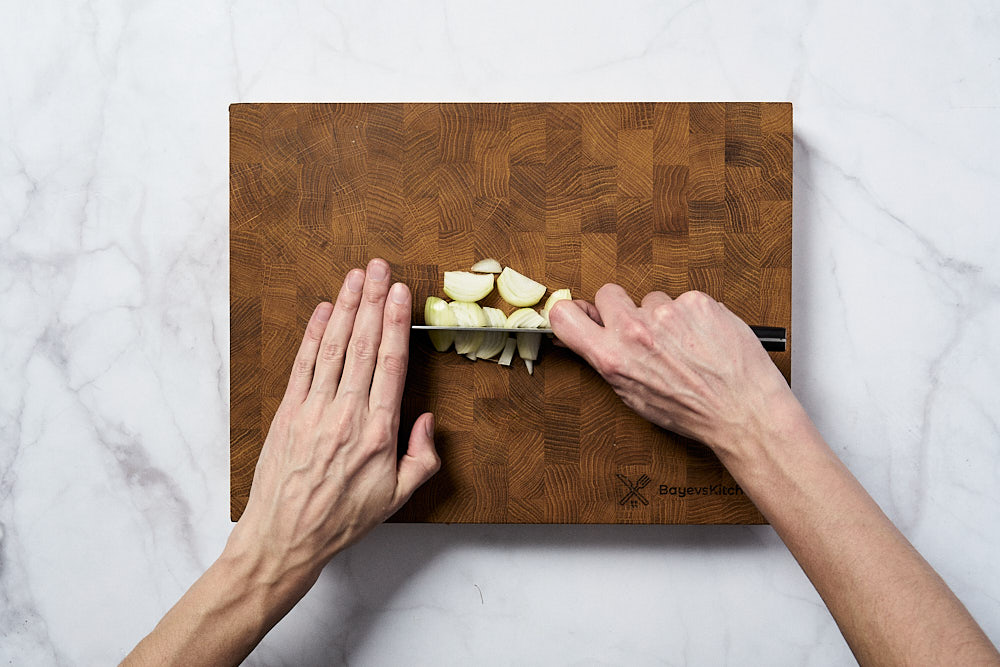

Cut the crust off the bread and cut it into slices.


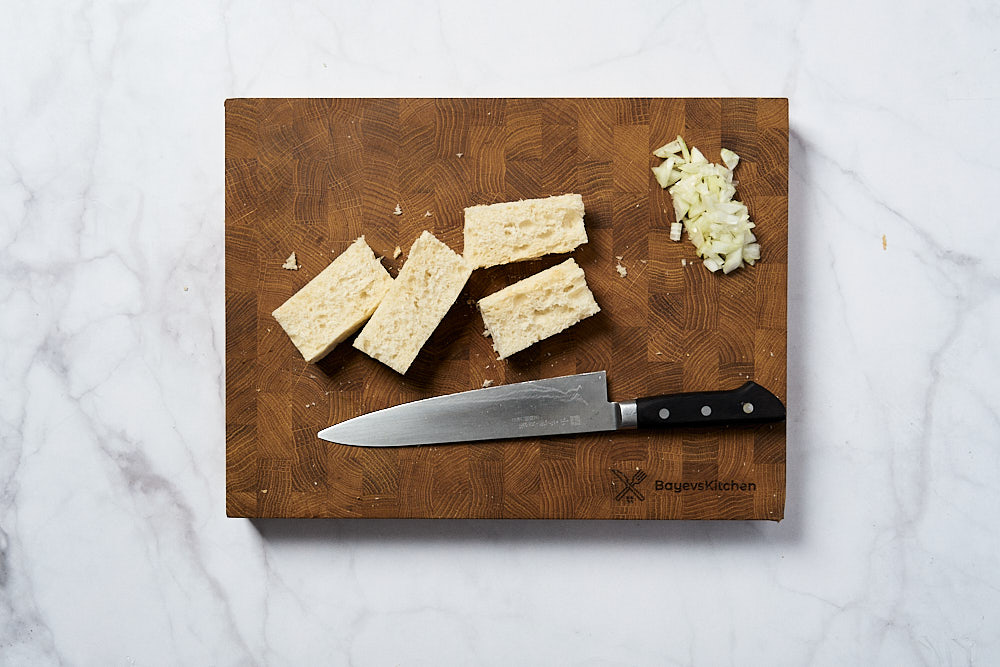
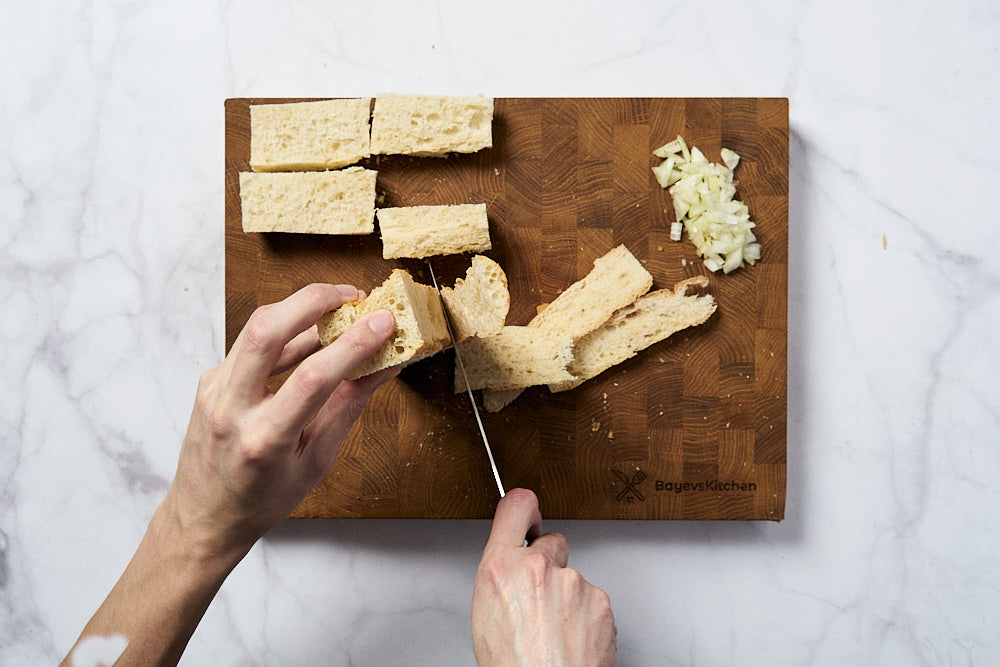
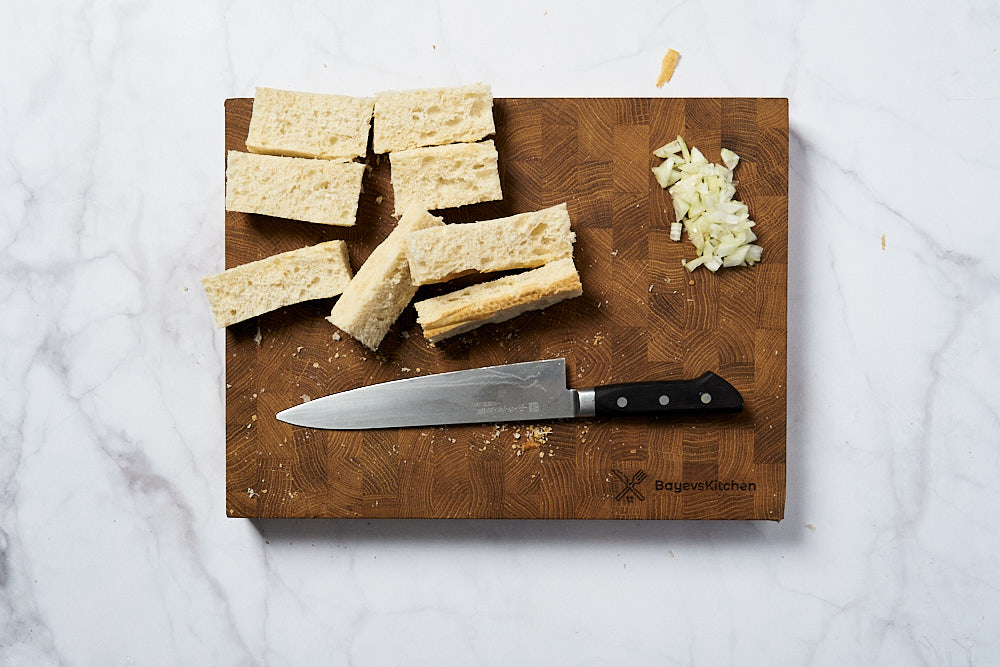
Soak the bread in water for 1-2 minutes.
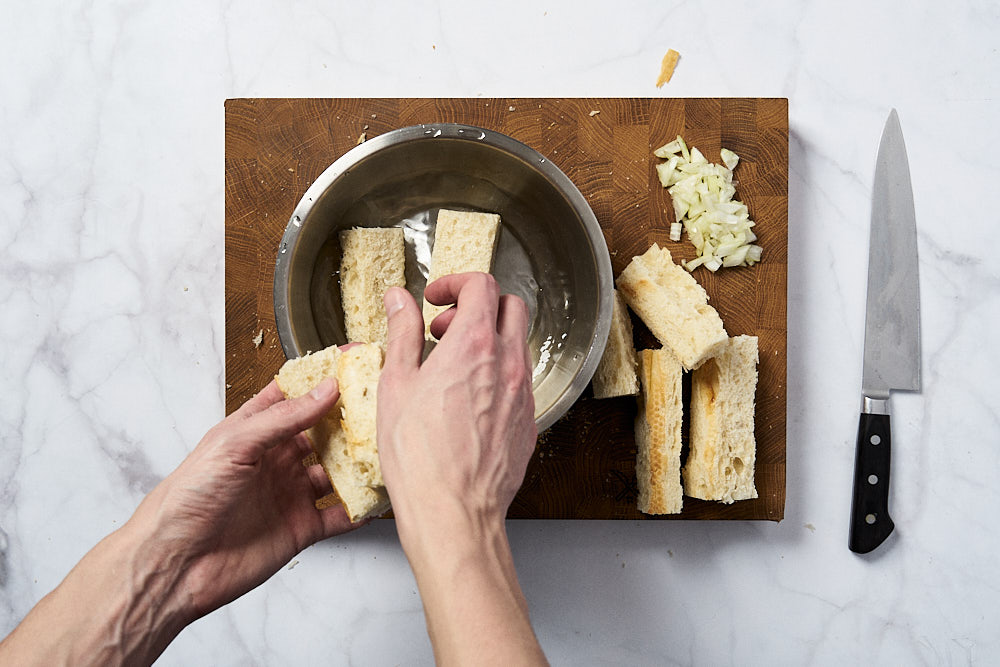
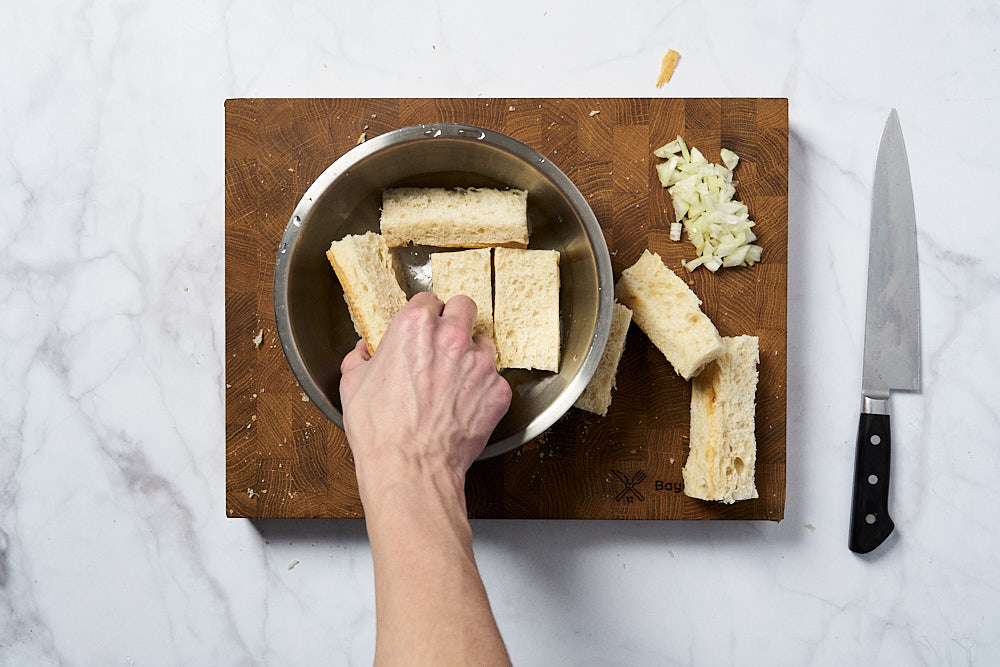
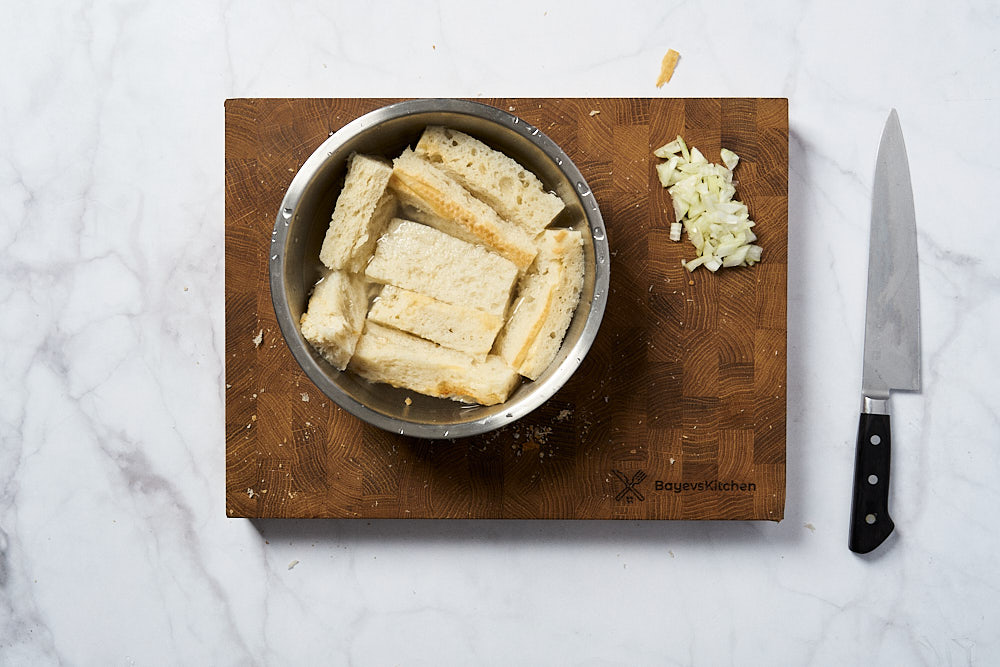
In the bowl of a blender (food processor) or a bowl, mix together 200 g (7,1 oz) of cod roe and chopped onion.
Squeeze the bread well and put it in a bowl. Pour in 50 ml (3,4 tbsp) of lemon juice.
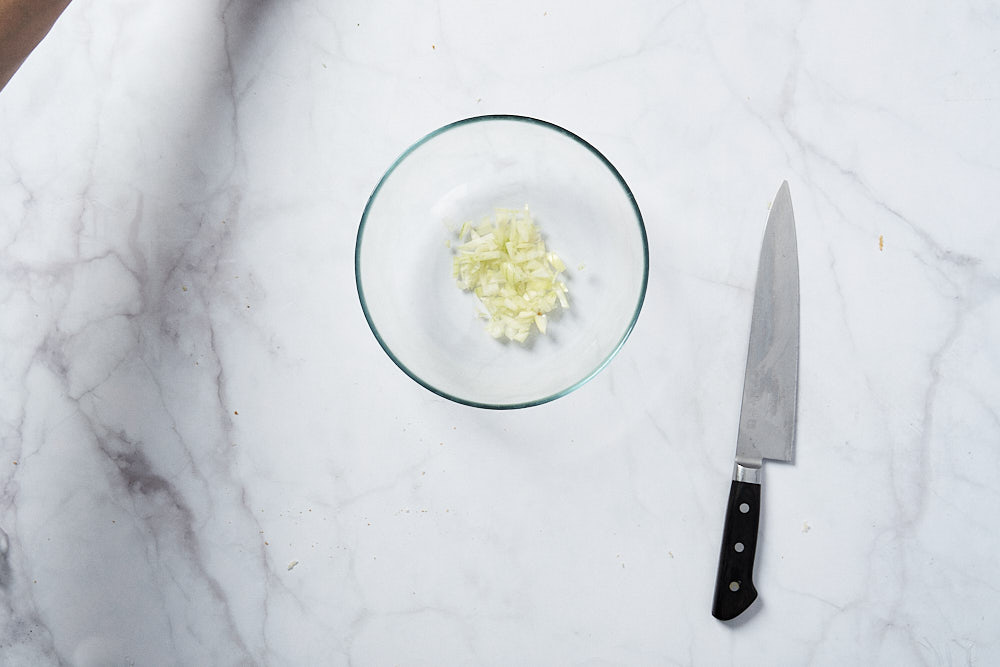
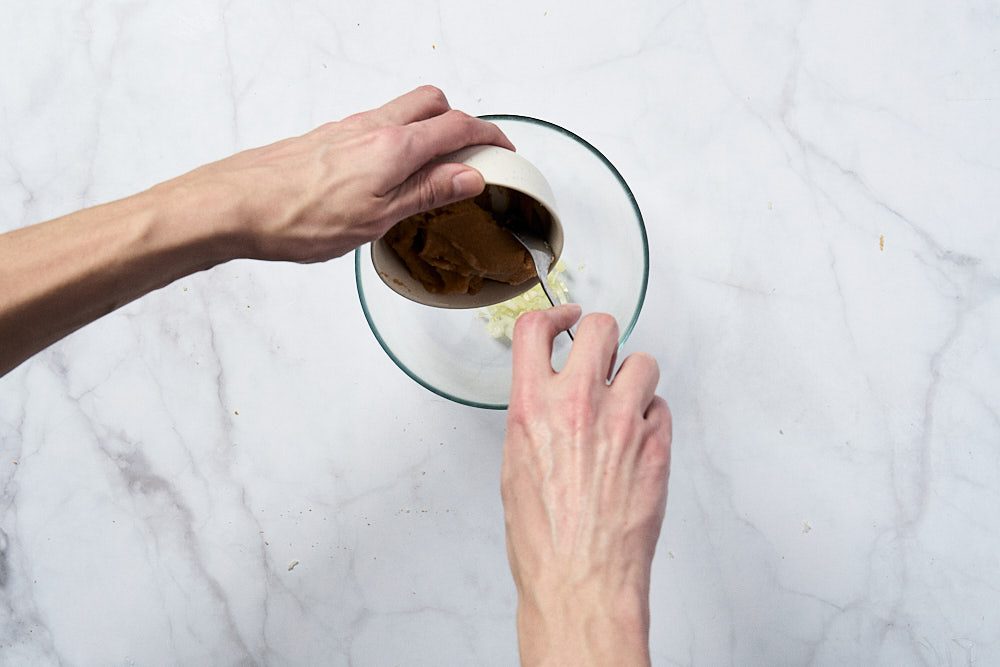
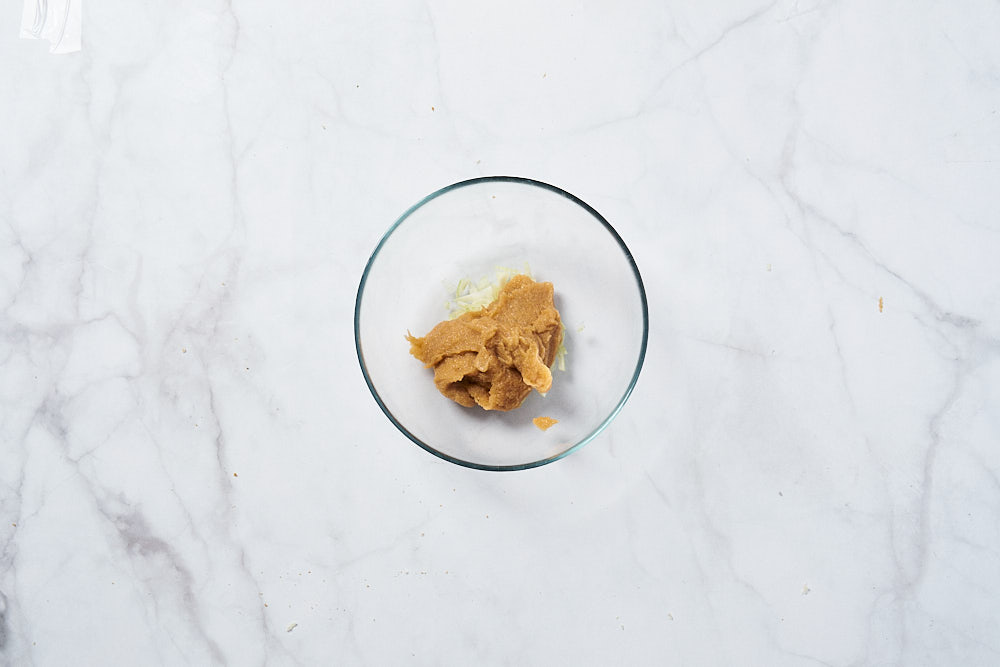
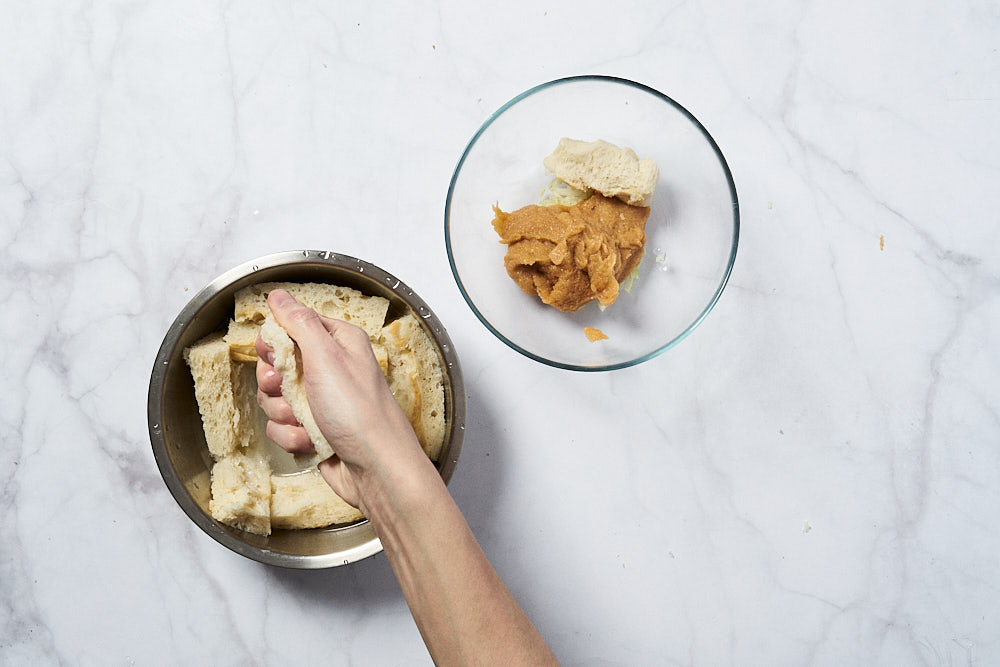

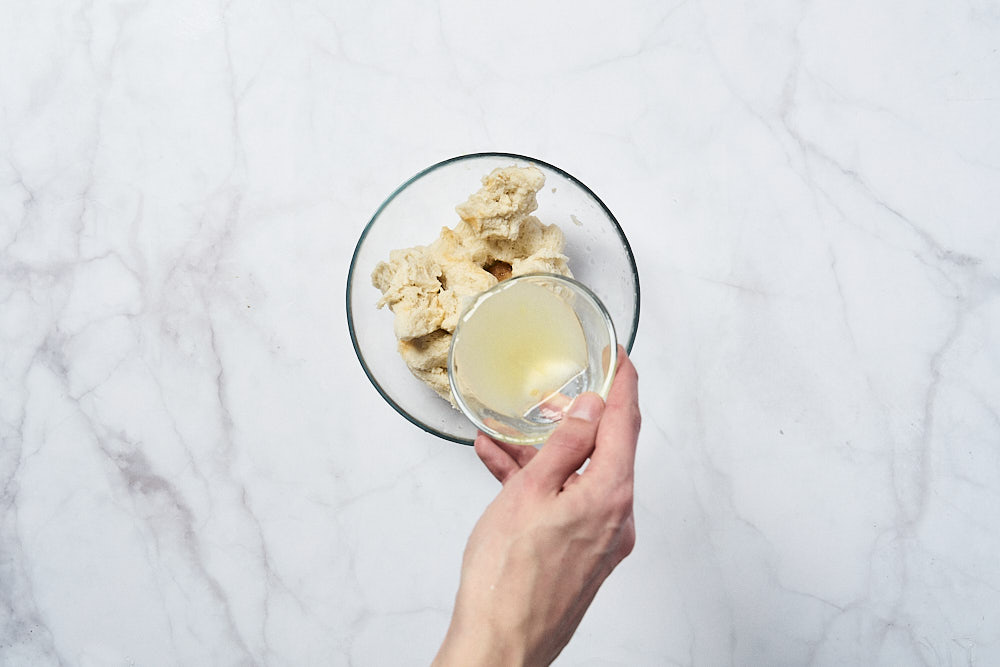
Puree with a blender until smooth.
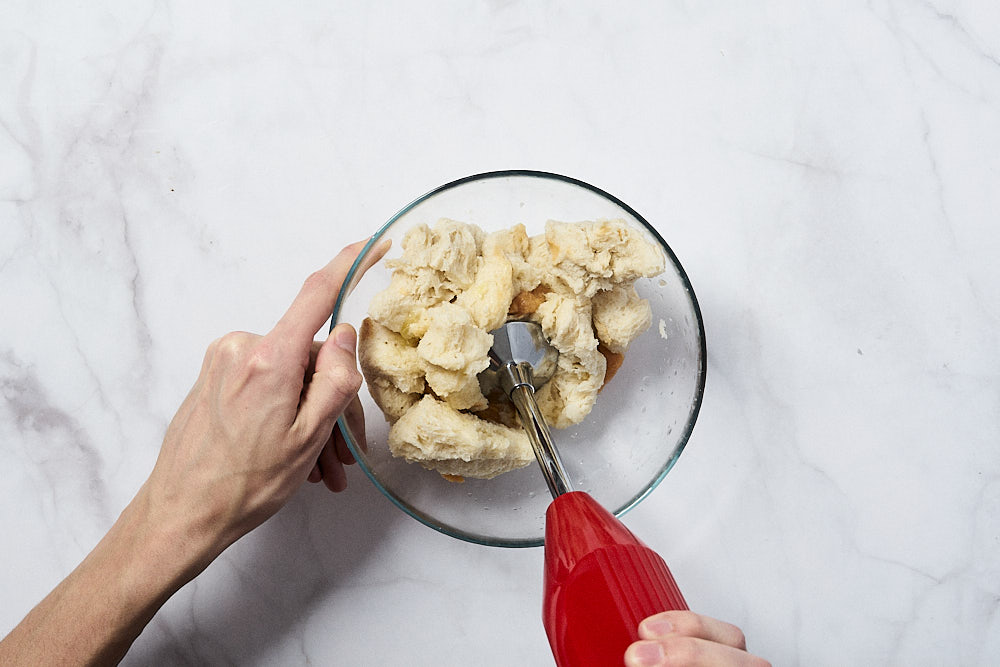

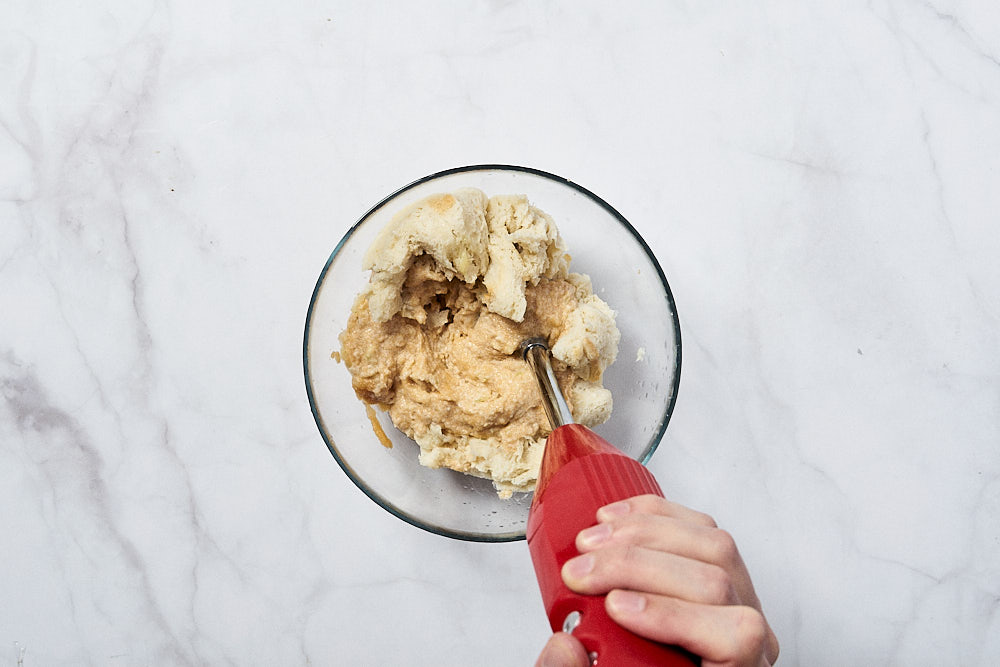
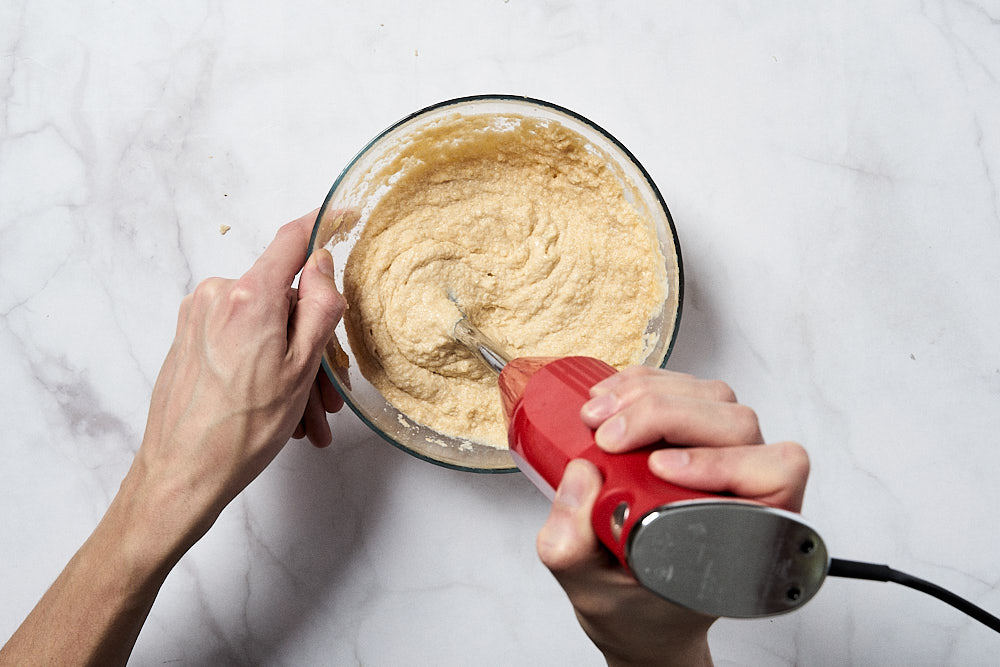
Continuing to whisk in a thin stream, pour 100-150 ml. (6,8-10,2 tbsp) of oil.
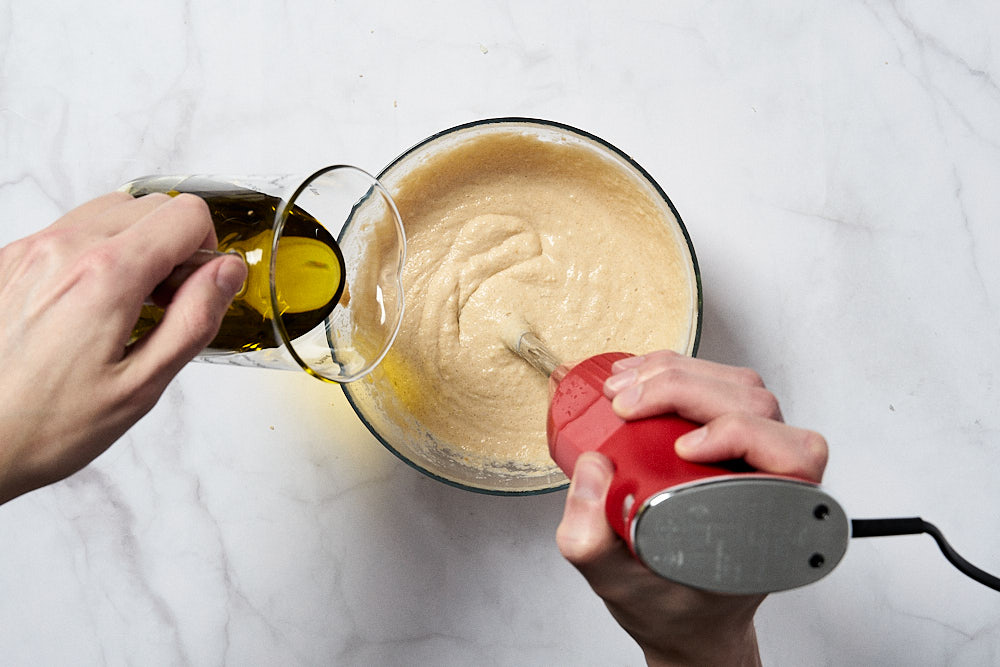
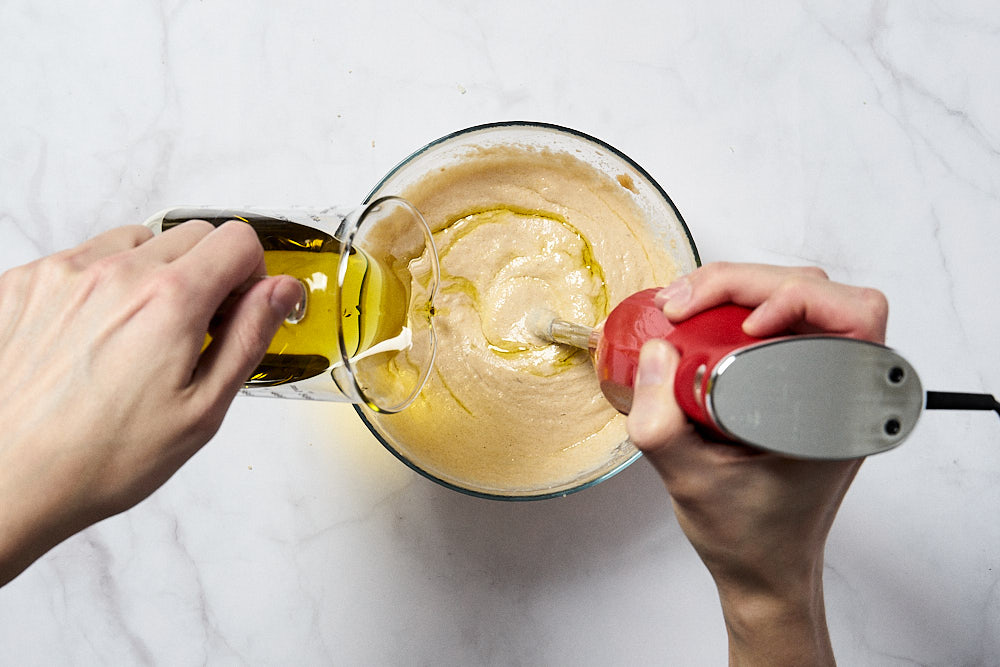
Be guided by the consistency. If it seems that the mass has become too liquid, do not add more oil.
I took ~110 ml. (7,5 tbsp)

If you overdo it, you can add more bread and bring it to the right consistency.
Which one? There is no definite answer here, be guided by your preferences. Try once to make the taramasalata more tender and smooth, reminiscent of hummus in texture. That’s what I did.
Other times, add more bread and the texture will be thicker and more airy. Experiment.
Keep in mind that in the refrigerator the oil will thicken and the mass will become slightly less liquid. This is especially true when using olive oil.
Transfer the taramasalata to a bowl, garnish with black Kalamata olives, and serve with triangle-sliced pita bread (such as the ones made with this recipe).
I like to pan-dry the pita first, cut it up, and serve it before it cools.
🥡 How to Store?
Taramasalata’s delicate ingredients require thoughtful storage to maintain its quality and safety. This Greek dip can last several days in the refrigerator when stored properly, but there are a few key points to consider.
Refrigeration
Taramasalata is best kept in the refrigerator. Immediately after preparation or purchasing, transfer the dip to a tightly sealed container to protect it from other food odors and bacteria. This also helps to prevent the taramasalata from drying out. When stored properly in the fridge, taramasalata can last for up to five to seven days.
Freezing
While it is technically possible to freeze taramasalata, it’s generally not recommended. The freezing and thawing process can alter the dip’s texture, making it less creamy and more grainy or watery. For the best taste and texture, it’s advised to consume taramasalata fresh and not freeze it.
Serving and Re-storing
When serving taramasalata, only remove the quantity that you plan to consume immediately. Each time the dip is exposed to room temperature conditions, its shelf life reduces due to potential bacterial growth. Therefore, to maximize its longevity, keep the dip in the fridge until it’s time to eat, and avoid leaving it out for more than two hours.
Checking for Freshness
Even when stored correctly, always check taramasalata for signs of spoilage before eating. This could include a sour smell, a change in color, or the presence of mold. If you suspect the dip is no longer fresh, it’s safer to discard it rather than risk food poisoning.
Remember, while these guidelines can help maximize taramasalata’s shelf life, the dip’s freshness also heavily depends on the freshness of the ingredients used to prepare it. Always aim to use fresh, high-quality ingredients for the best results.
🍴How To Serve?
The versatility of taramasalata allows you to get creative. The key is to maintain a balance of flavors and textures to ensure the unique taste of taramasalata shines through. Enjoy the process of serving and savoring this classic Greek dip!
- Meze Platter. Taramasalata is traditionally served as part of a Greek meze platter. Alongside the taramasalata, include options like dolmades (stuffed vine leaves), marinated olives, feta cheese, tzatziki, and slices of warm pita bread. This arrangement invites diners to try a little bit of everything, discovering how each component enhances the next. The varying textures and flavors create a gastronomic adventure, and the shared experience promotes connection and conversation.
- With Seafood. Taramasalata’s slightly briny flavor pairs well with seafood. Try serving it alongside grilled calamari or octopus, or use it as a dip for fried fish or shrimp. The salty, oceanic flavors are magnified when served with seafood, creating a harmonious marriage that enhances the characteristics of both the dip and the fish.
- In a Sandwich. Spread taramasalata onto fresh bread, and layer with ripe tomatoes, crisp lettuce, and a few slices of cucumber for a Greek-inspired sandwich. The taramasalata provides a creamy, flavorful base that brings all the sandwich elements together.
- Stuffed in Vegetables. Scoop out the centers of cherry tomatoes or mini bell peppers, and fill them with taramasalata for a delightful appetizer or snack. The freshness and slight sweetness of the vegetables pair well with the savory, creamy dip, and the vibrant colors make for a visually appealing dish.
- On a Canapé. Use taramasalata as a spread on small pieces of toasted bread or crackers, topped with a slice of cucumber or a piece of shrimp for an elegant canapé. The crunchy base contrasts well with the smooth taramasalata, and the toppings add an extra layer of flavor and visual appeal.
🥗 What To Serve With?
- Grilled Pita Bread. This is a classic choice that never fails to impress. The warm, lightly charred pita complements the creamy texture of taramasalata perfectly, offering a nice contrast and a means to scoop up the dip. The neutrality of the bread helps to highlight the tangy and salty flavors of the taramasalata. My favourite is pan roasted pita and Turkish Bazlama.
- Marinated Olives. The robust, earthy flavor profile of marinated olives stands up beautifully to the unique taste of taramasalata. The olives’ saltiness enhances the roe’s inherent oceanic flavors, creating an interesting interplay of Mediterranean flavors.
- Roasted Vegetables. Think along the lines of zucchini, bell peppers, and eggplant. Roasting brings out the sweetness in these vegetables, providing a counterbalance to the slight tanginess of the taramasalata. The various textures from the vegetables also add an interesting dimension to the meal.
- Chilled White Wine. A crisp white wine like Assyrtiko, a grape variety native to Greece, can be a wonderful palate cleanser. Its acidity and mineral undertones cut through the creaminess of taramasalata, enhancing its flavors.
- Dolmades (Stuffed Vine Leaves). These little parcels filled with rice and herbs offer a delightful contrast in terms of both flavor and texture. The herbaceous, slightly lemony notes of the dolmades pair well with the rich, briny flavors of the taramasalata.
- Fried Calamari. The light, crisp batter and the tender squid provide a fantastic textural contrast to the creaminess of taramasalata. The inherent sweetness in the calamari can also balance the slightly salty dip.
- Greek Salad. A fresh, vibrant Greek salad with ripe tomatoes, cucumbers, red onions, feta cheese, and olives, dressed in a zesty vinaigrette, can make a refreshing side. The salad’s crisp textures and sharp flavors create an engaging dialogue with the soft and rich taramasalata.
- Grilled Sardines Their rich, oily nature is a perfect partner to the taramasalata. The smoky flavor from the grilling process adds another layer of complexity to the dish.
- Tzatziki. Another Greek classic, this yogurt, cucumber, and garlic dip can be served alongside taramasalata for a contrast in flavors. The cool and creamy tzatziki can balance the robust, savory notes of taramasalata.
- Pickled Octopus. For an adventurous pairing, try serving taramasalata with pickled octopus. The vinegary tang and chewy texture of the octopus make for a bold contrast with the creamy and subtly briny dip.

FAQ
What is the main ingredient in taramasalata?
The main ingredient in taramasalata is tarama, which is the salted and cured roe (fish eggs) of cod, carp, or grey mullet. This gives the dip its distinctive, slightly salty taste and often a pale pink color. Other ingredients commonly used in taramasalata include lemon juice, olive oil, and bread, which all contribute to its creamy texture and tangy flavor.
How is taramasalata made?
Taramasalata is made by blending tarama, the salted and cured roe of either cod, carp, or grey mullet, with ingredients such as soaked stale white bread, onions, lemon juice, and olive oil until it reaches a smooth, creamy consistency. The dip is then typically chilled before serving to allow the flavors to meld together.

Taramasalata with bread

Equipment
- Blender or food processor
Ingredients
- 200 g cod roe (traditionally smoked, but can be replaced by regular)
- 300 g bread (Stale, yesterday's is fine)
- 1/2 onion
- 100-150 ml olive oil (use regular olive oil, not extra-virgin, you can substitute any other vegetable oil without taste/flavor, sunflower oil will do)
- 50 ml lemon juice (~ the juice of one large lemon)
- pita (optional, for filing)
- kalamata olives (optional, for filing)
Instructions
- Slice half an onion. Cut the crusts off the bread and cut into slices. Soak the bread in water.
- In the bowl of a blender (food processor) or a bowl, combine 200 g of cod roe, chopped onion, lemon juice and bread squeezed from the water.Puree with a blender until smooth.
- Continuing to whisk in a thin stream, pour 100-150 ml. of oil. Orient yourself to the consistency. If it seems that the mass has become too liquid – do not add more oil.
- Transfer the taramasalata to a bowl, garnish with black Kalamata olives and serve with pita sliced into triangles.
